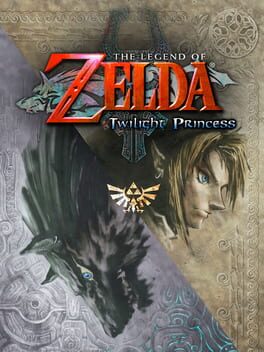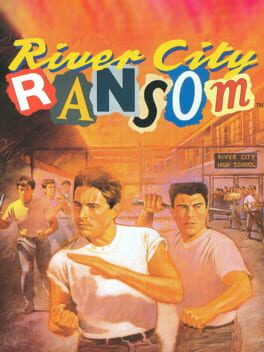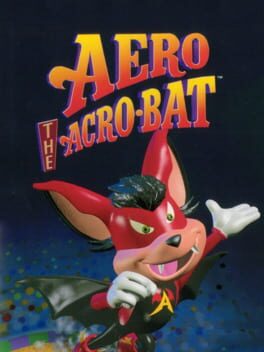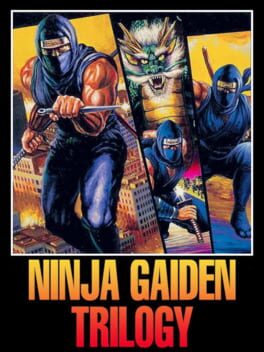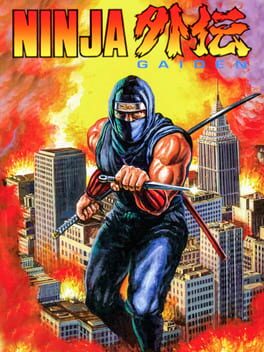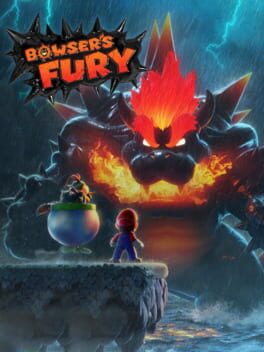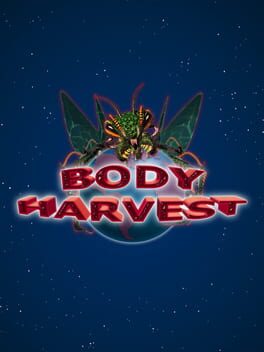So many weapons and items, so many stats, so many areas to explore, so many great songs, so many atmospheric touches, so many beautiful sprites, so MUCH is jam-packed into this wonderful game! Symphony of the Night is absolutely amazing. I especially love the minor RPG elements, like stats and status effects, which are totally unnecessary but add a cool new layer to the experience anyway. Best of all though, they make backtracking more enjoyable because each and every enemy you kill adds to your total EXP count.
Re: this versus Super Metroid (another 10/10 game for me), I think the level design is a little better in that game because it's more compact, whereas this game has a few too many long hallways. This one does let you warp around the map a bit which helps some at least. I prefer the combat and overall feel of this a little bit, though that game plays awesomely too. Play em both!
Re: this versus Super Metroid (another 10/10 game for me), I think the level design is a little better in that game because it's more compact, whereas this game has a few too many long hallways. This one does let you warp around the map a bit which helps some at least. I prefer the combat and overall feel of this a little bit, though that game plays awesomely too. Play em both!
Discourse among Zelda fans has shifted over the past couple decades. The franchise's more daring and experimental entries like Majora's Mask and Wind Waker were initially divisive, but over time they've become sacred cows praised for their unique aspects and presentation. This leaves Twilight Princess in sort of an unfortunate spot. It's no secret that the game deliberately returned to Ocarina of Time's classic conventions in an attempt to recoup fans that jumped ship after Wind Waker. Judging by sales numbers this tactic worked, but certain hardcore Zelda fans and gaming hipsters are sour on it. Among its detractors, Twilight Princess is dismissed as unoriginal, drab, and a soulless retread of Nintendo's most acclaimed 3D game. But that's selling the game really short.
Twilight Princess is Zelda at its most epic, grand and cinematic. The cinematic aspect manifests not just in the cutscenes, which are more dynamic and frequent than ever, but also in the game's outstanding setpieces, such as the epic battle against King Bulbin's hordes. Twilight Princess also takes plenty of time to characterize its cast. The game's introduction is notoriously slow-paced, but when shit finally hits the fan hard an hour in, it really feels like a big deal thanks to all the prior time spent on Link just living his normal life. Story does take a backseat in the latter half of the game, which makes the plot feel weirdly paced later on. But this is also when the game's world has truly opened up, allowing you to focus more on the core Zelda gameplay which is damn good this time around.
The best thing to come out of Nintendo returning to Hyrule and sidelining the gimmicks for this game is that the main 3D Zelda gameplay is sharply refined. The dungeons are all awesome and a huge improvement over Wind Waker's. They all feature great theming, fun gameplay elements that set them apart, satisfying puzzles, and epic boss battles. The overworld is great too. Hyrule Field is actually huge, packed with enemies and secrets. It's a much better realization of the hubworld concept than Ocarina of Time could've pulled off on the N64, and a lot more fun to roam around in than Wind Waker's sparse sea. Despite its grand scale, Twilight Princess is a little light on side content, but it's no surprise that most of the development team's attention went to the main quest considering how long it is. The minigames are pretty good though, and I spent hours on fishing back when this game was new.
The only thing that doesn't feel sufficiently refined--other than Wolf Link, who occupies exactly enough playtime to not get stale--is the difficulty balancing. The combat is almost awesome. The animations and overall feel are very satisfying, and you even have an expanded skillset to learn. Fighting enemies in this game is fun, but it's definitely not challenging. In the original versions of Twilight Princess, almost every enemy only does 1/4 or 1/2 heart of damage. Most of the treasures you find are pieces of heart, so it's not long before you're practically untouchable. Considering you automatically raise your shield when targeting, the abundance of jars that drop hearts, the availability of fairies and potions, and the fact that much of the game's optional treasure is pieces of heart, it feels like the game is running on training wheels, even when it does eventually start throwing tricky situations at you later on. The HD version includes the options of doubling or even quadrupling enemy damage and disabling heart drops, which helps a lot. Unfortunately, the game's enemies are still usually slow, dumb, and lacking in health, especially after you get the Master Sword. The last point really trivializes most of the game's special moves outside of the absolute most demanding encounters. This low difficulty extends to the boss fights too as the first few bosses barely even try to attack you and almost none of them have a particularly high damage output, not even the final boss. There are actually some tricky puzzles at least, but it's unfortunate that the "mature, realistic" Zelda game is so damned easy on the action side.
On the topic of this game's tone though, I'd like to say I think Twilight Princess's visual design is supremely underrated. I personally really wish Nintendo would return to a more realistic look for Zelda. I've seen people call this game's visuals colorless, but that's just wrong. The colors are more muted than the average Nintendo game, but I don't see how you can look at sunny Hyrule Field or the delicate Faron Woods and say that the game is nothing but brown soup. People complain that the graphics are "too muddy" but it's honestly one of the better looking "realistic" console games of the PS2/GameCube generation, really only a small step below the likes of Metal Gear Solid 3 and Resident Evil 4. I think if the game had came out in 2005 as originally intended, the graphics would've been remembered better, but instead it had to measure up to the Xbox 360 and PS3 at launch. Still, the art direction shines. The enemy designs are all great, the NPC designs are full of personality, Link looks fucking awesome, the environments are varied and full of detail, and anything to do with the Twilight realm looks very cool. I'd also like to note that the music is terrific as usual for this series. It fits the game like a glove in every circumstance, whether it's going for adventurous, creepy, or silly. An orchestral score would've been nice, and ditto with voice acting, but the game's audio is still fantastic for what it is.
This is such an awesome game. It's an epic, well-rounded, polished, and complete Zelda experience. It was worth the massive hype in 2006 and I still have a blast playing it. I recommend this game to anyone interested in the Zelda series. Just don't expect a particularly hard game.
Twilight Princess is Zelda at its most epic, grand and cinematic. The cinematic aspect manifests not just in the cutscenes, which are more dynamic and frequent than ever, but also in the game's outstanding setpieces, such as the epic battle against King Bulbin's hordes. Twilight Princess also takes plenty of time to characterize its cast. The game's introduction is notoriously slow-paced, but when shit finally hits the fan hard an hour in, it really feels like a big deal thanks to all the prior time spent on Link just living his normal life. Story does take a backseat in the latter half of the game, which makes the plot feel weirdly paced later on. But this is also when the game's world has truly opened up, allowing you to focus more on the core Zelda gameplay which is damn good this time around.
The best thing to come out of Nintendo returning to Hyrule and sidelining the gimmicks for this game is that the main 3D Zelda gameplay is sharply refined. The dungeons are all awesome and a huge improvement over Wind Waker's. They all feature great theming, fun gameplay elements that set them apart, satisfying puzzles, and epic boss battles. The overworld is great too. Hyrule Field is actually huge, packed with enemies and secrets. It's a much better realization of the hubworld concept than Ocarina of Time could've pulled off on the N64, and a lot more fun to roam around in than Wind Waker's sparse sea. Despite its grand scale, Twilight Princess is a little light on side content, but it's no surprise that most of the development team's attention went to the main quest considering how long it is. The minigames are pretty good though, and I spent hours on fishing back when this game was new.
The only thing that doesn't feel sufficiently refined--other than Wolf Link, who occupies exactly enough playtime to not get stale--is the difficulty balancing. The combat is almost awesome. The animations and overall feel are very satisfying, and you even have an expanded skillset to learn. Fighting enemies in this game is fun, but it's definitely not challenging. In the original versions of Twilight Princess, almost every enemy only does 1/4 or 1/2 heart of damage. Most of the treasures you find are pieces of heart, so it's not long before you're practically untouchable. Considering you automatically raise your shield when targeting, the abundance of jars that drop hearts, the availability of fairies and potions, and the fact that much of the game's optional treasure is pieces of heart, it feels like the game is running on training wheels, even when it does eventually start throwing tricky situations at you later on. The HD version includes the options of doubling or even quadrupling enemy damage and disabling heart drops, which helps a lot. Unfortunately, the game's enemies are still usually slow, dumb, and lacking in health, especially after you get the Master Sword. The last point really trivializes most of the game's special moves outside of the absolute most demanding encounters. This low difficulty extends to the boss fights too as the first few bosses barely even try to attack you and almost none of them have a particularly high damage output, not even the final boss. There are actually some tricky puzzles at least, but it's unfortunate that the "mature, realistic" Zelda game is so damned easy on the action side.
On the topic of this game's tone though, I'd like to say I think Twilight Princess's visual design is supremely underrated. I personally really wish Nintendo would return to a more realistic look for Zelda. I've seen people call this game's visuals colorless, but that's just wrong. The colors are more muted than the average Nintendo game, but I don't see how you can look at sunny Hyrule Field or the delicate Faron Woods and say that the game is nothing but brown soup. People complain that the graphics are "too muddy" but it's honestly one of the better looking "realistic" console games of the PS2/GameCube generation, really only a small step below the likes of Metal Gear Solid 3 and Resident Evil 4. I think if the game had came out in 2005 as originally intended, the graphics would've been remembered better, but instead it had to measure up to the Xbox 360 and PS3 at launch. Still, the art direction shines. The enemy designs are all great, the NPC designs are full of personality, Link looks fucking awesome, the environments are varied and full of detail, and anything to do with the Twilight realm looks very cool. I'd also like to note that the music is terrific as usual for this series. It fits the game like a glove in every circumstance, whether it's going for adventurous, creepy, or silly. An orchestral score would've been nice, and ditto with voice acting, but the game's audio is still fantastic for what it is.
This is such an awesome game. It's an epic, well-rounded, polished, and complete Zelda experience. It was worth the massive hype in 2006 and I still have a blast playing it. I recommend this game to anyone interested in the Zelda series. Just don't expect a particularly hard game.
2011
It's not perfect, but it is absolutely unforgettable. Loved the atmosphere, the big variety of locations, the crazy boss and enemy designs, the music that was there, and the overall combat system. I wish it had more music and that some stuff was easier to figure out without outside help. Fuck the Curse status effect.
1990
1993
It sounds like a genius idea to make a circus-themed platformer, but calling Aero the Acro-Bat a good game requires some serious mental gymnastics. Aero's diagonal jump attack sucks, you barely ever get any stars to throw at enemies, and the levels branch out in every direction with a different objective every time. Again, it SOUNDS like a good idea to have big branching circus levels you have to bounce around, but in practice it's boring as shit, just like Aero as a mascot. At least the graphics and music have some personality and there was some attempt to do something fun with the circus theme, like having trampolines, unicycles, and rings to jump through.
1993
1996
Intriguing story, interesting genre mishmash, great music, cool level design, good graphics, story choices in 1996, strong atmosphere--all these traits of Dark Savior are rendered almost moot by the horrific experience of wrestling with the awkward isometric platforming controls.
Rather than being able to move in 8 directions, you are locked to moving in four diagonal directions. The camera lets you rotate in such a manner that you can use the D-pad to control the game in the four cardinal directions, but doesn't let you lock into that position (and the character sprites don't make sense with that perspective anyway). Holding the controller at an angle isn't as comfortable a solution as you'd think. Even still, I could get used to the diagonal controls if not for the fact that turning seems to just not work--unlike seemingly EVERY other game I've ever played, if you change which direction you're pushing on the D-pad, Garian instead continues walking in the direction you were originally pushing as long as you're pressing the D-pad, so to change direction you have to stop pushing the D-pad at all then push the new direction you want to go. The sense of momentum feels a little off as well, which is an issue when the platforms can be quite small. Blatant awkwardness like this is a big problem since the punishment for failing platforming sections is more than a small progress or HP loss---in the game's first major area I found that falling caused me to have to repeat minutes of exploration during a mission that had a timed penalty. In the second area, I found that falling down a pit caused me to lose 20 "points" every time (500 of these points are needed to level up your character, and an NPC in the area offers you 100 points in exchange for 5 weak healing items which you could also be using to upgrade your attack power).
Another annoyance I had is that the unorthodox combat system was explained to me by an optional NPC after my second major battle (battles are not super frequent in this game compared to most games in its style), so I didn't know that you could capture enemies' powers or use cool finishing moves which would've increased my point count immensely and made it much more feasible for me to level up sooner. That all sounds really awesome and the fighting system already felt good before I knew that, but I feel like I must've missed an explanation. If it was in the manual, my bad I guess. (Except not really, having to read the manual to understand the game was quite passé by 1996.)
The ingredients of a great and interesting game are all here so it's just a real shame this game is so annoying to control and has some poorly explained aspects. I feel like if it were a little more accessible I would've really enjoyed it. Some more patient people who read up on the game's systems and are used to these controls in whatever other games they appear in would probably call this a great game. It's certainly a standout in the Sega Saturn's library, but I found myself getting too annoyed playing it to continue, even knowing the game is less than 10 hours long.
Rather than being able to move in 8 directions, you are locked to moving in four diagonal directions. The camera lets you rotate in such a manner that you can use the D-pad to control the game in the four cardinal directions, but doesn't let you lock into that position (and the character sprites don't make sense with that perspective anyway). Holding the controller at an angle isn't as comfortable a solution as you'd think. Even still, I could get used to the diagonal controls if not for the fact that turning seems to just not work--unlike seemingly EVERY other game I've ever played, if you change which direction you're pushing on the D-pad, Garian instead continues walking in the direction you were originally pushing as long as you're pressing the D-pad, so to change direction you have to stop pushing the D-pad at all then push the new direction you want to go. The sense of momentum feels a little off as well, which is an issue when the platforms can be quite small. Blatant awkwardness like this is a big problem since the punishment for failing platforming sections is more than a small progress or HP loss---in the game's first major area I found that falling caused me to have to repeat minutes of exploration during a mission that had a timed penalty. In the second area, I found that falling down a pit caused me to lose 20 "points" every time (500 of these points are needed to level up your character, and an NPC in the area offers you 100 points in exchange for 5 weak healing items which you could also be using to upgrade your attack power).
Another annoyance I had is that the unorthodox combat system was explained to me by an optional NPC after my second major battle (battles are not super frequent in this game compared to most games in its style), so I didn't know that you could capture enemies' powers or use cool finishing moves which would've increased my point count immensely and made it much more feasible for me to level up sooner. That all sounds really awesome and the fighting system already felt good before I knew that, but I feel like I must've missed an explanation. If it was in the manual, my bad I guess. (Except not really, having to read the manual to understand the game was quite passé by 1996.)
The ingredients of a great and interesting game are all here so it's just a real shame this game is so annoying to control and has some poorly explained aspects. I feel like if it were a little more accessible I would've really enjoyed it. Some more patient people who read up on the game's systems and are used to these controls in whatever other games they appear in would probably call this a great game. It's certainly a standout in the Sega Saturn's library, but I found myself getting too annoyed playing it to continue, even knowing the game is less than 10 hours long.
1986
If you're having trouble getting into this, then play The Legend of Zelda Redux. It's a patch that improves the map, subtly clues you in on which walls can be bombed and which bushes can be burned, and fixes the original garbled translation which butchered many of the original hints. All of these make this game much more accessible, but still challenging. It also includes a bunch of small graphical changes, but many of these can be reverted if you want a more vanilla-feeling experience.
Whether or not you're playing the game with that hack, be sure to check the manual that came with the original game, featuring lots of valuable info, here:
https://www.nintendo.co.jp/clv/manuals/en/pdf/CLV-P-NAANE.pdf
Whether or not you're playing the game with that hack, be sure to check the manual that came with the original game, featuring lots of valuable info, here:
https://www.nintendo.co.jp/clv/manuals/en/pdf/CLV-P-NAANE.pdf
This game blew me away the first time I played through it and I was immediately convinced it was maybe the best game ever made. The more time you spend with this game though, the more you see the problems. All the shrines look the same, all the dungeons look the same, all dungeon bosses (except the DLC one) look the same, there aren't enough unique enemies for such a huge world, and the final boss and ending are the lamest in the entire series by far. Most of the story already happened, almost all the interesting characters are already gone, Ganon is lame, there isn't enough unique music, and once your gear is good enough you stop wanting to fight enemies because you'd just be wasting all your good weapons to get clubs and boomerangs that pale in comparison to your badass lightning swords. Even the Master Sword runs on a battery and the Hylian Shield can still break eventually.
But that first playthrough is really something. Messing around with the physics engine, constantly having something interesting to run to, having to find it yourself instead of it being one of a million waypoints on your map, it's all really fun. The first time through it feels like the amount of fun things to do is endless. And of course, the slight RPG elements they added were something I wanted for a long time and it's awesome to play a Zelda game with all these different outfits and weapons to acquire. I especially like the interactivity of the temperature system and how the physics overall are the perfect mix of cartoony and "real" to feel intuitive.
All those flaws I listed in the first paragraph are real issues and something every major Zelda game after this needs to address. But I recognize them as growing pains for the series as they're trying something completely different and fresh with this game, something I respect immensely. There are five 3D Zelda games that are all variations on the same formula, so I'm totally fine with them making a game that tries to synthesize the classic Zelda essence with modern open world gameplay. The result is the first Zelda game in years that actually feels cutting edge for its day.
But that first playthrough is really something. Messing around with the physics engine, constantly having something interesting to run to, having to find it yourself instead of it being one of a million waypoints on your map, it's all really fun. The first time through it feels like the amount of fun things to do is endless. And of course, the slight RPG elements they added were something I wanted for a long time and it's awesome to play a Zelda game with all these different outfits and weapons to acquire. I especially like the interactivity of the temperature system and how the physics overall are the perfect mix of cartoony and "real" to feel intuitive.
All those flaws I listed in the first paragraph are real issues and something every major Zelda game after this needs to address. But I recognize them as growing pains for the series as they're trying something completely different and fresh with this game, something I respect immensely. There are five 3D Zelda games that are all variations on the same formula, so I'm totally fine with them making a game that tries to synthesize the classic Zelda essence with modern open world gameplay. The result is the first Zelda game in years that actually feels cutting edge for its day.
The foundation Zelda II is built on is solid. The action combat is fun and the world has a massive scale to it. The world actually has some life to it for the first time around, and the level system is enticing and satisfying. This is one of the first action RPGs! But it falters in its big frustration factor. Getting a Game Over resets you all the way back to Zelda's sleep chamber, meaning some looong treks if you screw up. Worse than that is that the enemies are pretty goddamn tough after a surprisingly short amount of time. The dungeons can also get samey and confusing to navigate as well. Also, the graphics are pretty ugly. It's too bad that these elements hamper what could have been a great game.
Now the Zelda II Redux patch, which rebalances things and makes some QOL improvements? That's a good game. If the game had came out more like that, I'd defend it more. The vanilla game though is tied with Skyward Sword as my least favorite Zelda on a home console. Even the Redux version sits at the lower tier of console Zelda games.
Now the Zelda II Redux patch, which rebalances things and makes some QOL improvements? That's a good game. If the game had came out more like that, I'd defend it more. The vanilla game though is tied with Skyward Sword as my least favorite Zelda on a home console. Even the Redux version sits at the lower tier of console Zelda games.
1995
Ninja Gaiden Trilogy is disappointing as fuck. Playing Ninja Gaiden with 16-bit graphics and music sounds SICK, but they put almost no effort into enhancing the graphics, the new musical arrangements have less punch han the originals, and they didn't even try to make NG1's final stage just a little more fair. The end result is very underwhelming for 1995. At least there's a password system and NG3 has infinite continues now but this version overall just isn't worth it. Also the controls are stupid. Everyone knows that on the Super Nintendo you hit B to jump and Y to attack in platformers, so how on earth could they not even get that right?
1988
Great in most respects, but couldn't they have made Stage 6 just a little easier and NOT kicked you back to the beginning of it if you got all the way up to the final boss? Castlevania 1 lets you restart from right before the final battle if you get up to the end and nobody would call that game too easy. It's too bad because the overall gameplay, graphics, music and cutscenes are awesome and showcase how the NES was a big leap above prior consoles.
1985
With big enemy variety, great powerups, catchy music, refined level design, tons of secrets, a fun fantasy aesthetic, and the best graphics on home console up to that point, the 32-level odyssey Super Mario Bros. wipes the floor with every previous console game ever released. When did games really get good? Maybe right here. The sequels expanded and refined things, but this game will always be great. Always hold A before you press start if you get a game over.
2021
1998

